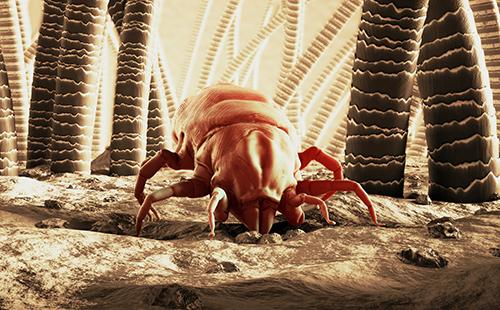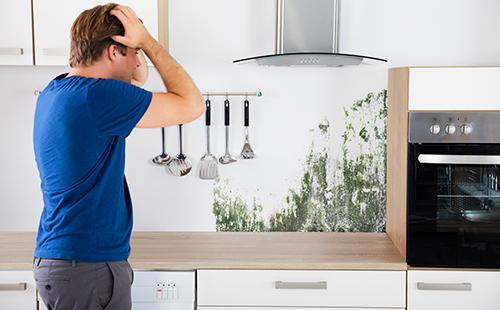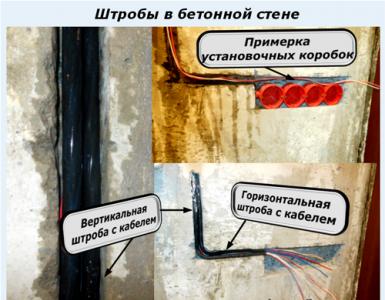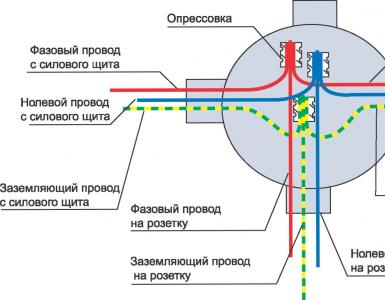The norm of air humidity in the apartment: how to measure and how to regulate
The degree of humidity depends on the time of year, weather conditions and regional climate - these factors determine the optimal air environment for both a particular region and a particular room. In winter, humidity drops noticeably, and in summer it becomes higher. Not only the health and well-being of people, but also the state of surrounding objects depends on air quality. Indoor plants, furniture, books, parquet, wallpaper, appliances and other interior elements do not tolerate moisture changes and may eventually become unusable.
What is the ideal and favorable air humidity should be in the apartment
The normative indicators of permissible moisture in residential buildings in the Russian Federation are prescribed by GOST and depend both on the purpose of the rooms and seasonality.
- Summer . In summer, the level of moisture in the air should vary from 30 to 60%, but not exceed 70%.
- Winter . In the cold period, the allowable value is 30-45%, the maximum is 60%.
It should be noted that these standards are intended more for designers and builders of residential buildings. Their task is to build and maintain facilities with the possibility of further maximum economical maintenance of summer humidity indicators in winter.
Standards for individual rooms. What percentage of humidity should be kept indoors
According to the previous figures, it can be seen that in winter the level of moisture in the apartment is lower than in summer. Low humidity is due to the fact that the humidity of cold outdoor air, getting into the room, decreases when heated to room temperature. However, during the heating season, the human body needs no less moisture than in summer, so doctors recommend keeping the humidity in the house at 40-60%, regardless of the season.
- Bedroom . For comfortable well-being and healthy sleep in the bedrooms, the optimal degree of humidity should be in the range of 40-55%. Try to get rid of unnecessary equipment as much as possible and ventilate the room as often as possible. To strengthen the immune system, doctors advise sleeping with the window ajar, even in the off-season or in winter.
- Children's. Children overheat and freeze faster, are susceptible to infections and have a harder time with illnesses. Therefore, for the child you need to maintain the right microclimate. Dry air dries out the mucous membrane of the nasopharynx, provoking colds: runny nose, cough, bronchitis. The lack of moisture for a newborn is extremely dangerous - peeling and atopic dermatitis can form on delicate skin. The norm of air humidity in the apartment where the baby lives is 50-60%.
- Living room . The largest and most spacious room in the house, where all family members spend most of their time. From 40 to 50% - this level of humidity will become comfortable not only for people, but also for pets, indoor flowers, as well as household appliances and furniture.
- Kitchen, bathroom. Here, the humidity level is usually off scale for acceptable norms. Cooking and water activities significantly increase the temperature and humidity. Good ventilation will help solve the problem. If the hood functions poorly, install an additional fan in it and ventilate the rooms more often, trying to achieve humidity indicators like in the living room - 40-50%.
- Study . 30-40% is a sufficient level of air humidity for a home office or library. Higher rates can adversely affect books, documents, and equipment. Usually, the air in the offices is dry, so a common task for the work area is to increase the humidity in the room.
- Greenhouse. If you are a happy owner of a winter garden at home, remember that, in addition to good lighting and temperature conditions, plants should be provided with the necessary dose of moisture at the level of 50-70%, depending on the origin of the plants.
The table shows what relative humidity is considered normal in an apartment for each individual room at the optimum temperature.
Table - Optimal humidity and temperature parameters for individual rooms
| Room | Air temperature, °C | Air humidity,% |
|---|---|---|
| Bedroom | 16-20 | 40-55 |
| Children's | 18-24 | 50-60 |
| Living room | 18-23 | 40-50 |
| Kitchen | 19-22 | 40-50 |
| Bathroom | 21-23 | 40-50 |
| Toilet | 16-19 | 40-45 |
| Study | 18-22 | 30-40 |
| Hallway | 18-19 | 40-45 |
| Greenhouse | 16-25 | 50-70 |
During the period of acute respiratory infections in the nursery, an increase of up to 70% is allowed, however, at the same time, the temperature indicator should not reach more than 24 ° C degrees so that a tropical climate is not created.
How to measure: 4 ways
How to find out the humidity in the house and increase it, if necessary - there are four proven methods for this. The most reliable will be the use of a hygrometer - a reliable device for measuring indoor air humidity. How is humidity measured in an apartment when there is no hygrometer? Hand tools. Of course, they will not give accurate numerical data, but in general they will determine whether the air in the home needs drying or additional humidification.
- Hygrometer. This device is easy to use, quickly shows the exact and absolute temperature and percentage of moisture in the atmosphere. Apparatuses are of several types: psychrometric, electronic, mechanical, condensation, hair and weight. The most convenient and accurate, according to users, is an electronic device that can be installed permanently or transferred, if necessary, from one room to another.
- . Record the temperature readings on a room thermometer. Wrap the instrument head with mercury with a wet cloth or cotton swab. After five to ten minutes, write down the result. Subtract the second number from the first temperature number. Then look at the Assman table (see table below). In the vertical left column, find the first reading of the thermometer, in the horizontal top line - the second calculation. At the intersection of the numbers you will see the approximate level of moisture in your room.
- Glass with water. For two to three hours, place a glass of water in the refrigerator compartment, cooling the liquid to 3-5 ° C. At room temperature for a few minutes, observe the reaction of water on the outer wall of the vessel. If in five to ten minutes the glass walls managed to fog up and dry, this indicates overdried air. The glass continues to be foggy - the humidity in the room is average, in the case when the condensate flows down in large drops - this is an indicator of too high humidity.
- Fir cone. Leave the spruce cone in a room away from heat sources for several hours. In a dry atmosphere, the scales will open, with an increased degree of moisture, they will shrink tightly.
How to boost
In winter, the air in the premises dries out due to the operation of heating, in summer the air conditioner dries the atmosphere, because of this, the humidity is low and it needs to be raised. How to humidify the air in a room - special devices or time-tested folk remedies will solve the problem.
Humidifiers
The modern market offers three types of humidifiers, the principle of which is to evaporate water from a special reservoir and supply the missing moisture to the air space.
- Mechanical (traditional). It functions due to the fan built inside, which carries out the air through the liquid tray, cleaning it from dust particles and moisturizing. The "minus" of the device is a high degree of noise during operation and a limited level of moisture - up to a maximum of 60%.
- Steam . The principle of operation resembles a kettle, from which boiled water enters the atmosphere in the form of steam. It is allowed to use hard water - straight from the tap. However, the device is also noisy in operation, consumes a lot of electricity and requires extra care in use - hot steam can burn the skin or damage the surfaces of nearby objects.
- Ultrasonic. Turns water into a vapor state thanks to a special membrane plate. It is not as noisy in operation as the first two models. The function of heating the liquid is capable of killing pathogenic microbes in the atmosphere. It is only necessary to pour distilled water into the tank of such a device or buy cartridges to clean and soften it.
Some models of steam humidifiers are equipped with nozzles for inhalation procedures, which is very important during the period of respiratory diseases, especially if there are children at home.
home methods
The absence of a steam generator at home is not a sentence. The following three "grandfather" methods will help saturate the room with the missing moisture without a humidifier.
- Water container. Place water containers near heaters or on top of radiators, as well as on cabinets or bedside tables. Evaporating, the water will increase the humidity in the air and keep it at the right level. Replenish the water in the vessels as it evaporates.
- Wet towels. During the day, moisten cloth napkins or towels and put them on the battery, repeat the procedure when the cloth dries. You can simplify the task as follows: put a container of water under the battery, lowering one end of the bandage tape folded two or three times into it, place the other end on top of the battery. Rising to the heat, the liquid will gradually evaporate, solving the problem of dry air.
- Houseplants. By default, home flowers release oxygen and moisture into the atmosphere, and regular watering and frequent spraying will improve the microclimate in the rooms.
What to do if the apartment has dry air, water containers take up useful space, and there is no time to periodically moisten the towels? Get fish in an aquarium or get a desktop fountain with circulating water - a great decorating solution and plenty of moisture in the room.

3D rendering of a dust mite that can cause allergies.
Dry air danger
An atmosphere that is too dry creates static electricity that lifts and holds fine dust particles in the air. The result is the reproduction of dust mites and other microbes that provoke health problems.
- Dryness of mucous membranes. Weakens the immune system, provokes the appearance of infectious and colds, itching, redness and burning of the eyes.
- Dry skin. The first step to the appearance of dermatitis, peeling, the formation of microcracks and early wrinkles, brittle nails and brittle hair. . It occurs due to a slowdown in blood circulation, the first symptoms are weakness and headache.
- Disruption of the digestive system. As a result of an increase in the viscosity of the digestive juice in the stomach and intestines.
- Deteriorating air quality. It entails the formation of a high concentration of allergens in the atmosphere.
One of the signs of dry air is the dried tips of the leaves of house plants. Also, with a lack of moisture in the room, synthetic clothing is electrified.
How to downgrade
When the cause of high humidity is an external source - a damp basement, a dilapidated roof or a reservoir located near the dwelling, then the most reliable way is to carry out repairs using waterproofing. If the formation of dampness is the result of your life, then the following methods will help get rid of the humidity in the house.
Air dryers
Household dehumidifiers are mobile and stationary. The performance of the device is measured by the amount of absorption of liters of water per day and varies from 12 to several hundred liters.
- Compressor. The principle of operation of the device is simple: built-in fans drive moist air into the unit and pull it through the evaporator. Due to the temperature difference, moisture settles on it in the form of condensate and flows into a special receiver. The heated air enters the room again through a separate hole.
- Adsorption. Such an apparatus is often referred to as a moisture absorber. The device has no moving parts, consumes no energy and is completely silent. The adsorbent substance placed inside the device absorbs moisture from the air. The adsorbent saturated with moisture should be periodically changed or moisture should be released from it back into the atmosphere in a special way.
Air dehumidifiers can be used in winter in unheated rooms. In case of untimely release of the container from the water, the device switches itself off.
home methods
Oil radiators can reduce humidity in a small apartment, modern air conditioners also have the function of adjusting the level of moisture in the air. But in order to achieve the maximum effect, in addition to using special devices, you should follow three simple rules.
- Airing. Regular aeration reduces the amount of water vapor in the air. The more often you ventilate, the more the air space in the room dries out.
- Sunlight . Don't draw the curtains. The rays of the sun effectively dry the rooms in a few hours.
- Hood. In non-ventilated rooms with a high level of moisture, such as a toilet or bathroom, the installation of a quality hood is a must. The ventilation system should be equipped with metal-plastic windows in the apartment.
Dampness in the rooms is very well absorbed by lighted candles, a working hair dryer and other equipment. The correct microclimate is provided by indoor plants.

Moist air danger
Excess water vapor in the air space of rooms provokes the growth of mold, various fungi and other harmful bacteria, causing a health hazard.
- chronic diseases. Dampness in a residential area provokes the occurrence and severe course of acute respiratory infections, asthma and even tuberculosis. In severe form, these diseases are difficult to cure.
- Fatigue . Stuffy heavy air makes it difficult to breathe and sleep, can cause asthma attacks.
- Bad smell. The reproduction of pathogenic microbes causes an unpleasant musty smell in the house, and almost immediately after airing, the feeling of fresh air is lost.
- The dampness of things. Clothes, towels, bed linen and other things in a damp room do not completely dry out, bacteria multiply on damp fabrics, and, in contact with the skin, can cause various dermatological diseases.
Regardless of the time of year, do not abuse air conditioners and heaters. Optimum air humidity in an apartment or house is easily achieved through regular ventilation and wet cleaning. A healthy microclimate in a dwelling will help to avoid chronic diseases and allergies, positively affecting the well-being of residents. Periodically check the humidity level in the rooms and keep it normal.













